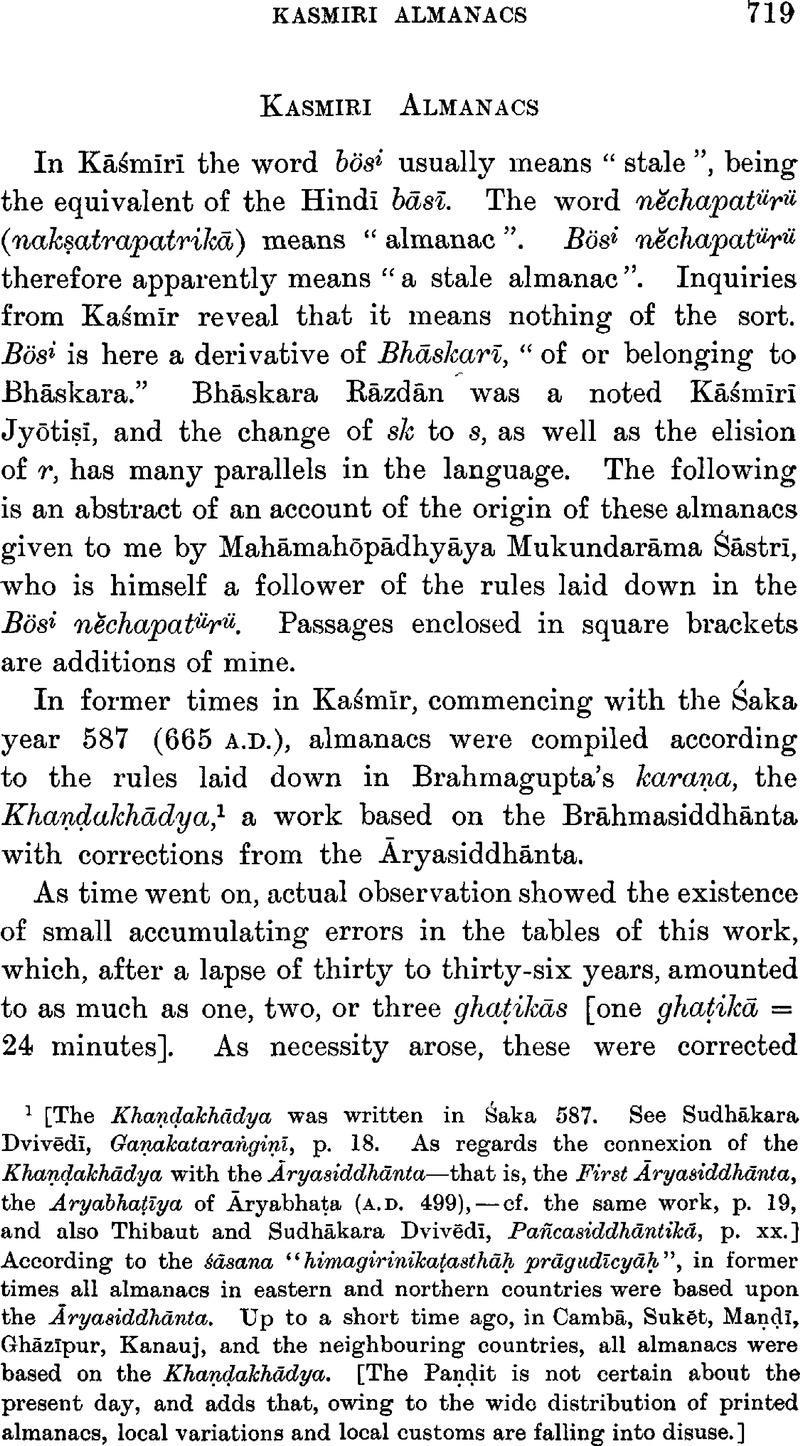No CrossRef data available.

page 719 note 1 [The Khaṇḍalchadya was written in Śaka 587. See Dvivēdī, Sudhākara, Gaṇakataraṅgiṇḍī, p. 18Google Scholar. As regards the connexion of the Khaṇḍdakhādya with the Āryasiddhānta—that is, the First Āryasiddhānta, the Aryabhaṭiya of Āryabhaṭa (a.d. 499),—cf. the same work, p. 19, and also Thibaut and Dvivēdī, Sudhākara, Pañcaaiddhāntikā, p. xxGoogle Scholar.] According to the śāna “himagirinikaṭasthāḥ prāgudīcyāḥ”, in former times all almanacs in eastern and northern countries were based upon the Āryasiddhānta. Up to a short time ago, in Cambā, Sukēt, Maṇḍndī, Ghāzīpur, Kanauj, and the neighbouring countries, all almanacs were based on the Khaṇḍakhādya. [The Paṇḍit is not certain about the present day, and adds that, owing to the wide distribution of printed almanacs, local variations and local customs are falling into disuse.]
page 720 note 1 A Sāraṇī is a kind of ready reckoner, a book of tables for the rapid calculation of astronomical moments, such as the commencement of a tithi or the like.
page 720 note 2 [See GaṇakataraṄgiṇī, 58. The date of the Grahalāghava was 1520 a.d. There was an annular eclipse of the sun visible in India on December 30, 1758, n.s. The conjunction occurred 6 hours 17 minutes after sunrise (Laṅkā time).]